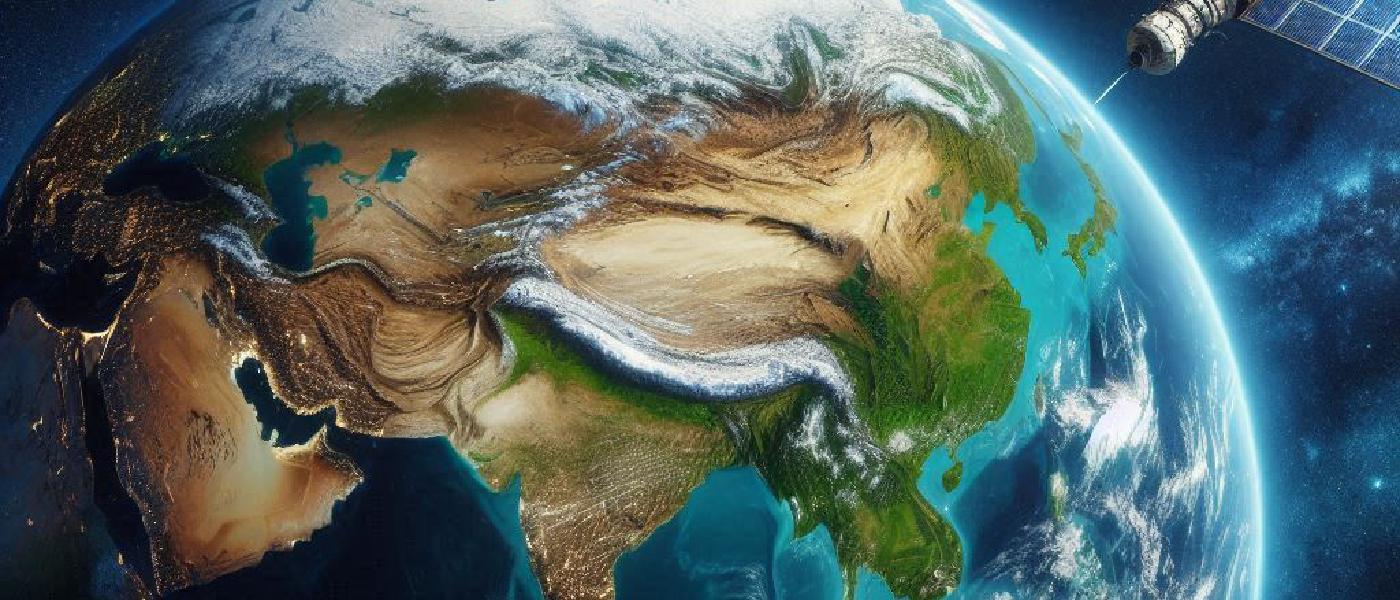What is Geospatial Technology?
Posted on June 5, 2024 • 5 min read • 930 wordsGeospatial technology has become an essential tool across multiple fields due to its ability to provide detailed spatial information and geospatial analytical capabilities

What is Geospatial Technology?
Geospatial technology refers to a range of modern tools that contribute to the geospatial mapping and analysis of the Earth and human societies. These technol ogies have helped us visualize, analyze and interpret data in various fields.
Geospatial technology utilizes several technologies, such as Geographic Information Systems (GIS), Global Positioning Systems (GPS), remote sensing and cartography. GIS is a framework for gathering, managing and analyzing geospatial data rooted in the science of geography. GPS is a satellite-based navigation system that allows users to determine their exact location on Earth. Remote sensing is the scientific method of obtaining information about objects or phenomena without direct contact, often through satellite or aerial imagery. Cartography is the art and science of map-making.
Geospatial technologies are essential in the modern world. In environmental management, it helps track changes and historical trends in climate patterns, monitor deforestation and manage natural resources. Urban planners utilize spatial technologies to design city layouts, optimize traffic flow and plan public transportation routes. In disaster management, geospatial technology is needed for emergency response, risk assessment and recovery planning.
Understanding Geospatial Technology
The foundation of geospatial technology is the Geographic Information System (GIS). It utilizes spatial data to capture, manage, analyze and display all forms of geographic information. Other key components include the Global Positioning System (GPS) for precise location tracking and remote sensing technologies like satellite imagery and aerial photography.
Applications of Geospatial Technology
Geospatial technology has become an essential tool across multiple fields due to its ability to provide detailed spatial information and geospatial analytical capabilities:
Environment: A key component of environment management is geospatial data and its tools. By analyzing spatial data, scientists can monitor deforestation rates, track wildlife populations and monitor natural disasters in ecosystems.
Urban Planning: Urban planners use GIS applications to design city layouts, optimize public transportation routes and manage utilities. GIS also helps visualize urban growth patterns using remote sensing data and plan land use. Essentially, geospatial technologies improve the livability of urban spaces.
Disaster Management: Integrating spatial technologies in disaster management has helped us with risk assessment, early warning systems, and emergency response management. Using spatial technologies, specifically remote sensing, we can map hazard-prone areas, track the progression of events in real time, and plan evacuation routes.
Agriculture: Farmers and agronomists use geospatial data to optimize crop yields, manage resources and monitor crop health. GIS is essential for precision agriculture, integrating with soil sampling, field mapping and analyzing crop conditions from planting to harvest.
Transportation: The transportation sector is another field that benefits from geospatial technology. Utilizing geospatial technologies has led to improved route planning, better monitoring of traffic conditions and management of logistics. The efficiency of shipping and delivery services has been enhanced and autonomous vehicle navigation systems have also benefited from spatial technologies.
Public Health: It has been particularly useful in managing the COVID-19 pandemic by tracking virus spread. Public health officials used geospatial data during the pandemic to track disease outbreaks and planned healthcare facilities.
The Future of Geospatial Technology
With the latest advancements in AI, machine learning and cloud computing, geospatial technology has enhanced and helped develop new tools. These new technologies have led to more advanced spatial data analysis and visualization. Recent technologies have proved location intelligence’s benefits, leading to a more data-driven mindset. A better understanding of recent advancements also indicates potential growth in the field.
FAQs
- What are geospatial technologies about?
Geospatial technology is about understanding where things are, how they’re connected and how we can use that knowledge to make better decisions — basically, it’s all about location. It’s a suite of tools that goes far beyond traditional cartography, transforming how we interact with and understand our planet. For example, delivery services use it to optimize routes so they save time and fuel. Ride-sharing apps rely on geospatial tech to connect passengers with drivers in real-time. Besides the physical world, it also helps us to understand population demographics and movement patterns by analyzing social media trends and several other platforms. The applications of geospatial technology are vast and constantly expanding.
- What are the challenges of Geospatial Data?
Geospatial data is the backbone of everything from disaster response to precision agriculture. The amount of geospatial data we collect is exploding every day. However, it comes with great responsibility and some interesting challenges it faces.
One big concern is keeping all this information safe. Privacy has recently become a common issue and geospatial data can be personal. Geospatial technologies can be used to track someone’s every move. So, figuring out how to use this data responsibly while still getting the insights can be difficult if it’s not secured well. With valuable data floating around, we need robust systems to protect this information from falling into the wrong hands.
- Why geospatial data is important?
Geospatial data adds a crucial missing piece to non-spatial data. For example, Geospatial data injects geography into the sales figures, allowing you to see essential numbers plotted on a map. We can see patterns and historical trends using analytics over these combined data and predict potential sales.
We can use location intelligence to pinpoint ideal store locations based on factors such as demographics and competitor placement. Utility companies can map their infrastructure, identify leaks and optimize maintenance efforts. Emergency responders can use geospatial data to find the fastest routes to accident sites.
External Links
- [National Geographic: What Is GIS?](https://www.nationalgeographic.org/encyclopedia/geographic-information-system-gis/) (Anchor Text: "Learn more about GIS")
- [Esri: What is GIS?](https://www.esri.com/en-us/what-is-gis/overview) (Anchor Text: “Explore GIS technology”)
- [IBM: Geographic Information System](https://www.ibm.com/topics/geographic-information-system) (Anchor Text: “Discover GIS applications”)